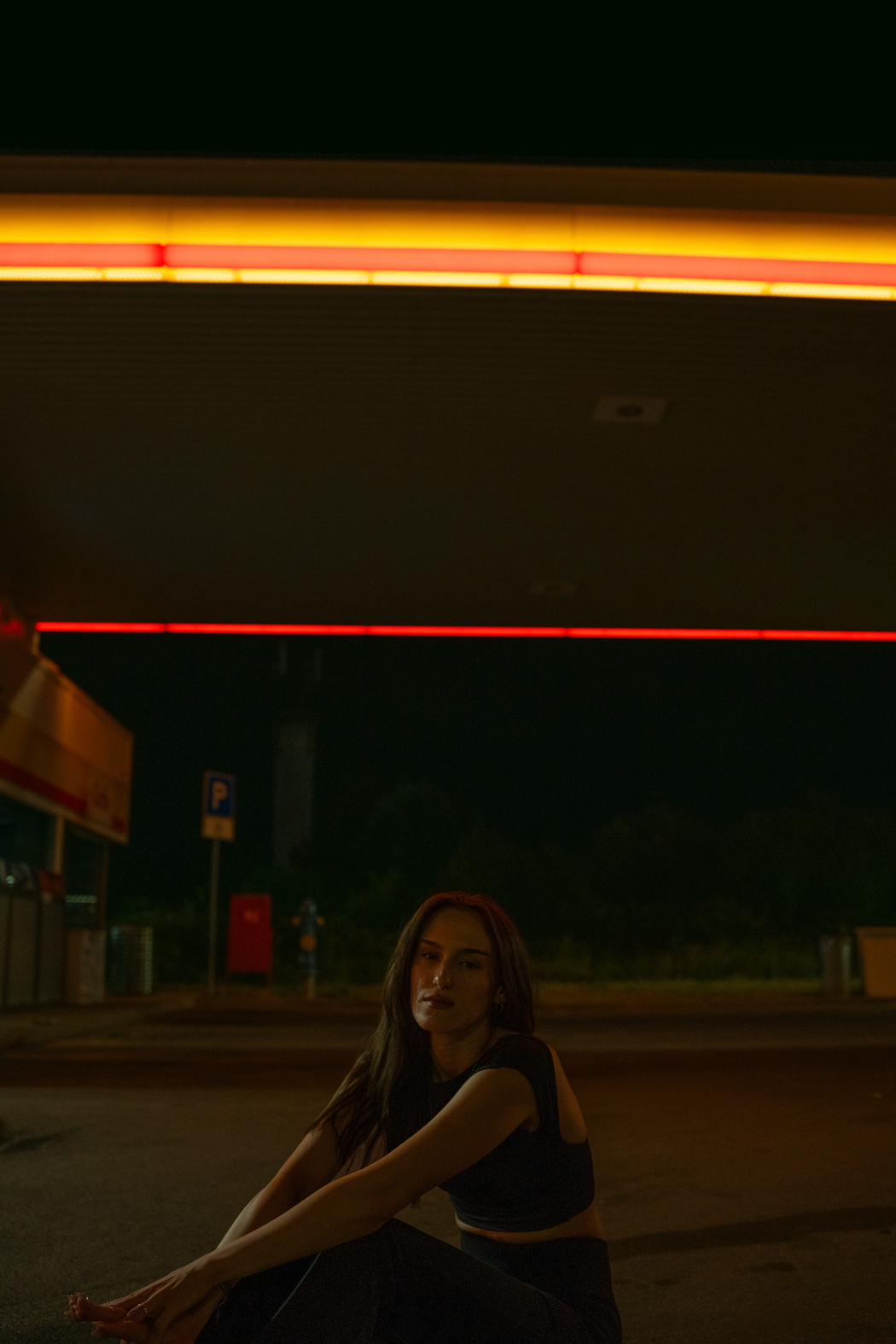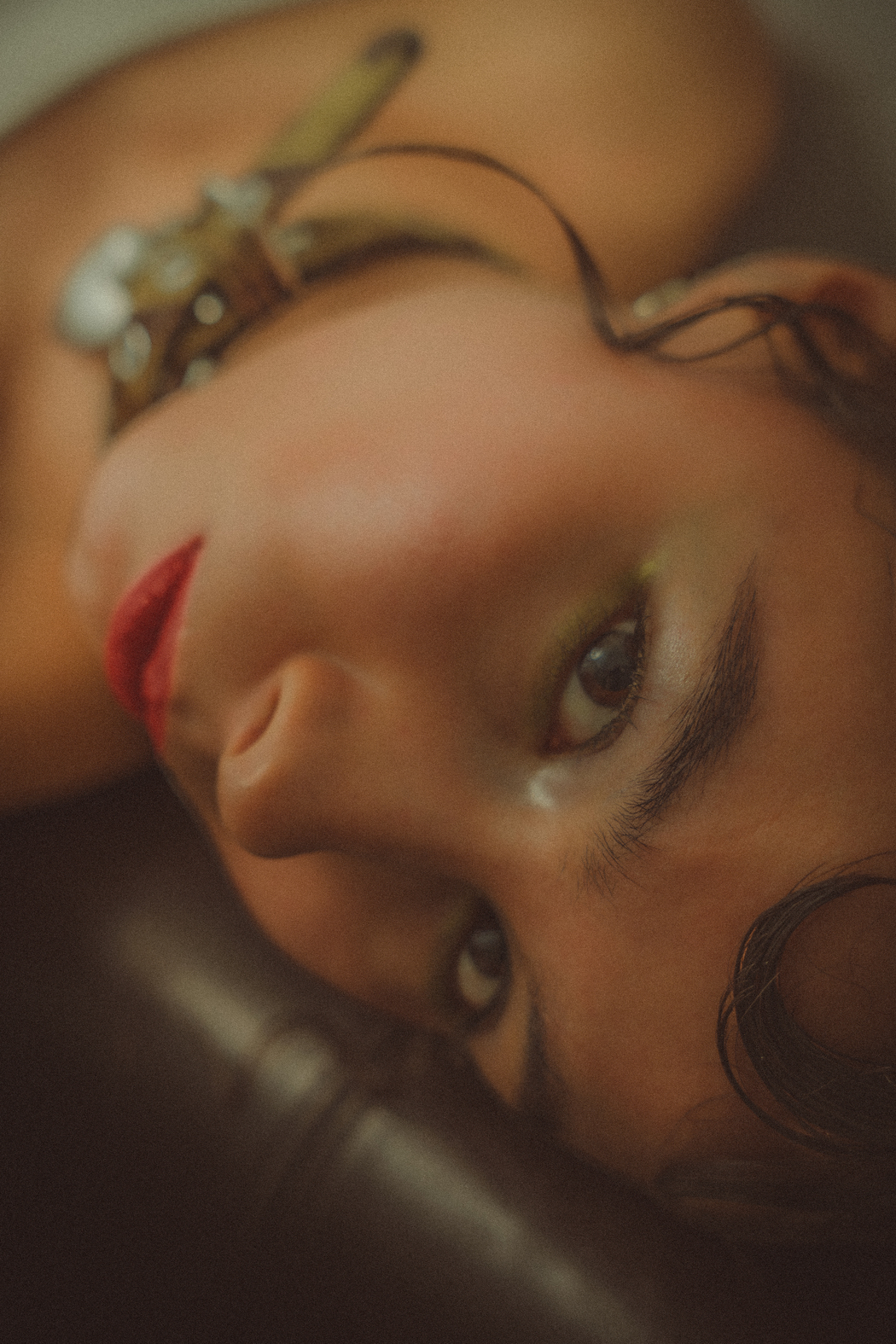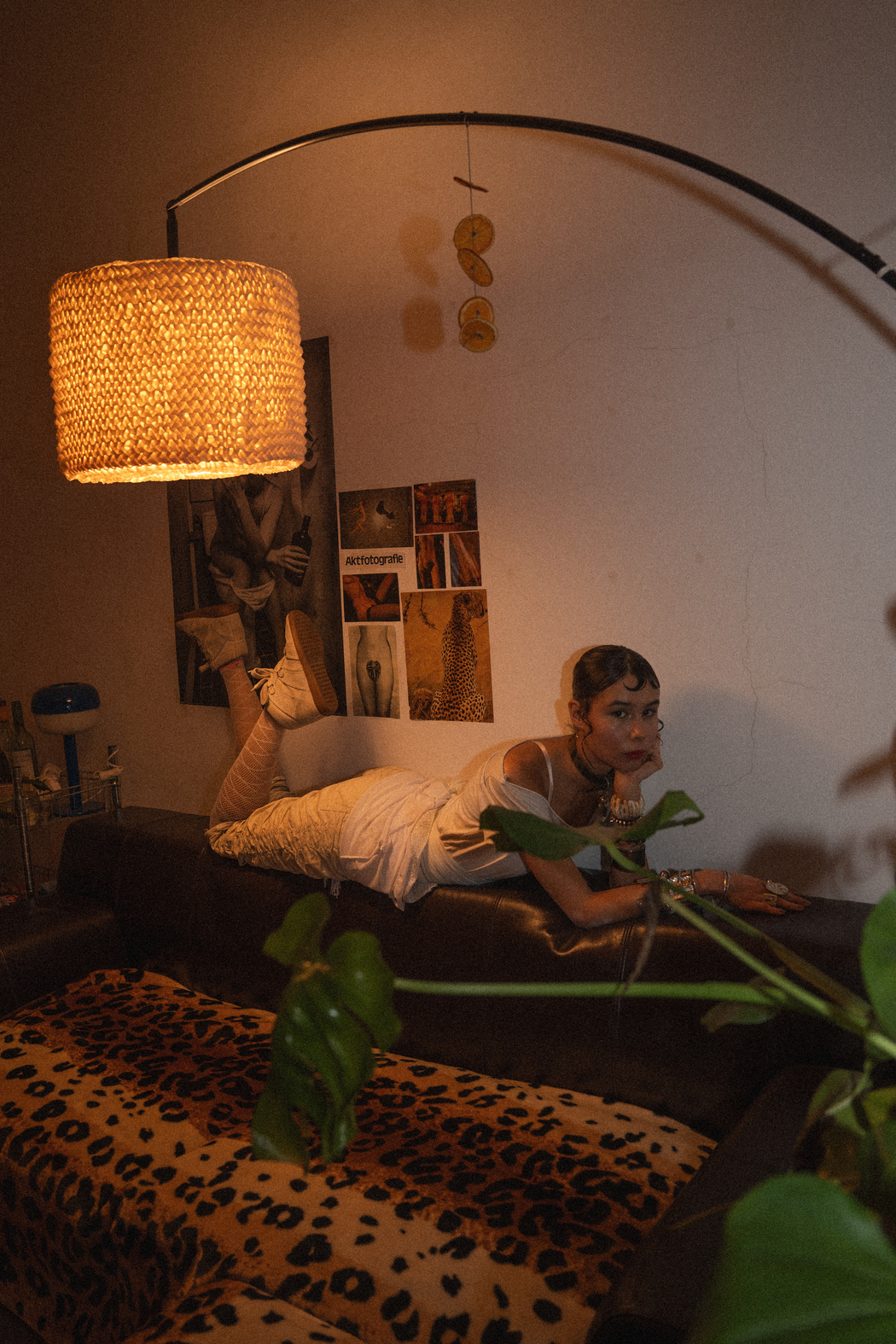Michelle Dmitrović
Can you tell us about your journey into photography and what inspired you to start capturing moments through the lens?
I’ve never found it particularly easy to express myself verbally. I always feel like I’m grasping for the right words. That’s where the visual component comes into play—it allows me to express my thoughts, views, emotions, and perspectives without the struggle in my head. That being said, my creative journey actually began with videography, which is why I believe my images have such a strong narrative quality. I kind of stumbled into photography along the way.
 Michelle Dmitrovic | Pitstop | 2024
Michelle Dmitrovic | Pitstop | 2024
How do you approach storytelling in your photography, and what elements do you focus on to convey a narrative?
All of my images are approached conceptually. Or rather, I never really had another choice. I actually find it extremely difficult to just capture a moment as it happens in a purely documentary way. I’ve never had a knack for that. What I thrive in is creating moments and developing the narrative of the captured scenes myself. That’s where I can unleash the full force of my creativity. But it’s not just the concept and content of the image that are crucial for the narrative. To quote media theorist Marshall McLuhan: “The medium is the message.” The conscious decision of which medium to use (e.g., digital, analog, which type of film, in what format) also conveys a statement.
What role do emotions play in your work, and how do you ensure that the images you capture resonate with viewers on a deeper level?
Since photography is a form of expression for me, my emotional state certainly plays a big role. However, I wouldn’t say that my intention is necessarily for the viewer to experience it in the same way. Images can resonate with people in very different ways, and of course, I’m happy when that happens. But for me, my own authenticity is what matters most.
 Michelle Dmitrovic | Editorial | 2025
Michelle Dmitrovic | Editorial | 2025
Your work showcases a unique blend of moments and emotions. Can you walk us through your creative process when preparing for a photoshoot?
Before I pick up my camera, I spend a lot of time developing a clear vision for the shoot. I start by thinking about the mood, the story, and the emotions I want to capture. From selecting the right setting to choosing lighting and poses, every detail plays a role in creating an image that feels both intentional and natural. The biggest challenge is making sure that even though everything is carefully planned, the final photo feels like a real moment, full of genuine emotion. I focus on blending structured composition with spontaneity, so each image tells a story that feels raw and lived-in.
What are some of the biggest challenges you’ve faced as a young photographer, and how do you overcome them?
Being taken seriously. Especially not just as a young photographer but also as a female one. And not only by outsiders but even within the industry itself. Professional photography combines two aspects that women in our society are only reluctantly associated with: technology and business acumen. It feels like you need ten times the references before the same doors open for you as they do for your male counterparts—simply because these two traits are attributed to them from birth, while we, as women, have to prove ourselves. In this ongoing struggle, I’m grateful to have a large network of female creatives with whom I can share and discuss these challenges; yet, I wouldn’t call this ‘overcoming’ it, but rather a form of finding solace—because it’s unfortunate, and I don’t believe we should resign ourselves to it.
 Michelle Dmitrovic | Editorial | 2025
Michelle Dmitrovic | Editorial | 2025
How does your background in Theater, Film, and Media Studies influence the way you approach photography?
I believe that the theoretical, analytical, and historical aspects of my studies shape me a lot. This is also strongly reflected in my approach to photography. Creativity is one thing, but engaging with critical theories and historical contexts elevates it to another level, as it provides an extended foundation. What all these mediums have in common is that they serve as mirrors of a constantly evolving society—and they continuously reference and reflect back on each other. This interconnectedness allows me to explore different perspectives and helps me bring more depth to my projects.
How do you balance technical aspects of photography, like lighting and composition, with the emotional storytelling you aim to achieve?
It’s important to understand the technical aspects of photography—but not necessarily to take technically perfect pictures that follow the golden ratio, are flawlessly lit, and never grainy. It’s much more about knowing the aspects so that you can use them stylistically. The more familiar you are with it, the easier it becomes to execute your vision deliberately. This also allows you to intentionally break these conventional rules in a way that supports the storytelling. For me, it is essential to keep an intuitive approach and to explore what resonates with my creative vision.

Leave a Reply